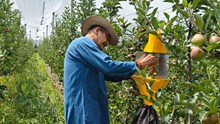
Few agricultural products have shaped world history as profoundly as black pepper. Referred to as “black gold,” this spice has been traded across continents for centuries, drawing explorers, traders, and colonists to India’s shores. Among the various cultivars of black pepper, Malabar Pepper, named after the Malabar Coast of Kerala, stands out for its superior quality, robust flavor, and historical significance.
The GI-tagged Malabar Pepper is a prime example of how geography, climate, and traditional farming techniques combine to produce an agricultural product of international repute.
Botanical and Geographic Origins
Malabar Pepper belongs to the species Piper nigrum, a flowering vine in the family Piperaceae. Native to the tropical forests of the Western Ghats, particularly in Kerala, this perennial woody climber thrives in hot and humid climates. The Malabar region, with its red loamy soils, consistent rainfall, and shaded forest canopies, provides ideal conditions for the pepper plant to flourish.
Historically, the Malabar Coast has been a key center for pepper cultivation and trade. From Roman merchants in antiquity to Arab and Chinese traders in the medieval period, and finally European colonial powers in the 15th century, Malabar Pepper has been a constant draw for international commerce.
Cultivation Practices
Climatic Requirements and Soil
Malabar Pepper cultivation is intrinsically tied to the monsoon climate of Kerala. The plant requires a warm and humid atmosphere, with a well-distributed annual rainfall of 2000–3000 mm. It thrives at altitudes ranging from sea level up to 1200 meters.
The soil must be fertile, well-drained, and rich in organic matter, preferably red lateritic or loamy soil. The pH should be slightly acidic to neutral (5.5–6.5). The crop is typically cultivated on hill slopes or in plantations intercropped with areca nut, coconut, or coffee.
Planting and Propagation
Propagation of Malabar Pepper is primarily done through vegetative means using cuttings. Farmers select healthy, disease-free vines and root them in nursery beds. After 3–4 months, the rooted cuttings are transplanted to the main field near support trees, which can be live trees like Erythrina or dead wood poles.
Spacing between plants is usually maintained at 2–3 meters. Each vine is trained to grow up the support using coir ropes or natural creepers. The plant begins yielding from the third year onwards, with peak productivity achieved by the seventh or eighth year.
Shade and Nutrient Management
Shade is a crucial component in pepper cultivation. Pepper vines are shade-loving and grow best under 50% filtered sunlight. Natural forest cover or intercropping ensures this balance.
Organic farming is traditionally practiced in the region. Farmers often apply compost, cow dung, green manure, and neem cake to enrich soil fertility. Biofertilizers like Azospirillum and Phosphobacteria are also used.
Pest and Disease Management
Common pests include pollu beetles and top shoot borers, while diseases such as quick wilt (caused by Phytophthora capsici) pose a major threat. Organic and integrated pest management strategies, including the use of Trichoderma fungi, neem oil, and mulching, are employed to reduce chemical usage and maintain soil health.
Harvesting and Post-Harvest
Harvesting takes place between December and March when the pepper spikes begin to turn red. The spikes are hand-picked, sun-dried for 7–10 days, and threshed to separate the peppercorns. Malabar Pepper is distinguished by its bold, dark, wrinkled skin and high piperine content, which contributes to its pungency and aromatic intensity.
GI Tag for Malabar Pepper
Malabar Pepper received its GI tag in 2008, making it one of India’s officially recognized specialty spices. The GI registration was done under the Geographical Indications of Goods (Registration and Protection) Act, 1999.
The GI tag for Malabar Pepper was granted based on the following factors:
-
Unique Quality: High piperine content (6–8%) and a strong, sharp flavor profile.
-
Geographical Specificity: Grown exclusively in the districts of Wayanad, Kannur, Kozhikode, Kasaragod, and parts of Malappuram and Idukki in Kerala.
-
Traditional Cultivation: Age-old, eco-friendly cultivation practices passed down through generations.
-
Economic Importance: A key income source for thousands of small and marginal farmers in Kerala.
The GI status was facilitated by organizations like the Spices Board of India and farmer cooperatives, who documented the cultivation methods, soil types, climate patterns, and trade history.
Global Recognition and Market Demand
Today, Malabar Pepper is one of India’s leading export spices. The demand for organically grown, ethically sourced pepper has been rising globally, especially in gourmet food markets and health-conscious segments. India exports this GI-tagged pepper to countries like the USA, UK, Germany, and the Middle East.
The GI status has also encouraged value-added products such as white pepper, pepper oil, and dehydrated green pepper, further broadening market opportunities for Malabar farmers.
Malabar Pepper is more than a spice, it's a story of centuries-old trade, biodiversity, and sustainable farming woven into one. The GI tag has elevated this regional produce into a global identity, preserving not just its distinctiveness but also empowering the farming communities of Kerala. As consumers become increasingly conscious of food origins and authenticity, Malabar Pepper stands as a shining example of how traditional agriculture, when protected and promoted, can thrive in modern markets.
















